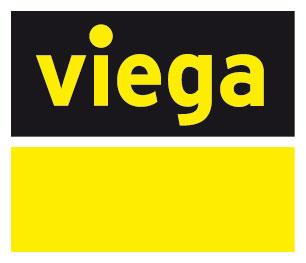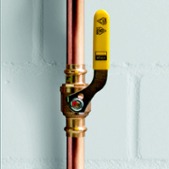PEX plumbing systems don’t allow the water pressure to drop. Have you ever experienced a cold shock in the shower when someone flushes the toilet, or a small trickle of water when you're trying to do the dishes while the washing machine is running?
Whatever the scenario might be, it’s clear that when pressure drops in your plumbing system, headaches arise for homeowners. Not only is comfort impacted, but these fluctuations in pressure — the cause of temperature changes — also increase water waste and energy costs.
While traditional layouts for PEX plumbing systems can (quite literally) feel the pressure of this issue, home-run systems help to deliver more consistent pressure and temperature to end users. See how these systems are different, and how they lead to a better end result.
A PEX Plumbing System that Minimizes Pressure Loss
A PEX plumbing system includes separate manifold chambers to serve hot and cold water lines. The cold-water manifold is fed from the main water supply line, and the hot-water manifold is fed from the water heater. Water pressure in manifolds is maintained by the incoming service line.
A water line dedicated to each fixture originates from a port in the manifold. Manifold plumbing systems can have a single central manifold located at the water service line entry point, or they can have a main central manifold and additional smaller manifolds to service remote fixture groups.
Plumbing manifolds are mounted in a convenient, accessible location, such as a basement wall or a service closet, to allow access for shutting off individual fixtures.
In a home-run PEX plumbing system, a centralized manifold is the control center. From this manifold, individual distribution lines stretch out to each fixture in a system, which means fewer connections are needed behind the wall and you have individualized control valves for each fixture.
Because the manifold is engineered with a large 1 ¼” central chamber, it is better equipped to handle demand spikes and minimize the pressure drops that can come along with that. This ensures that every fixture gets enough water when it’s in use — no more blasts of cold water or trickling sinks.
Just as important as the method of installation are the type of fittings used. While crimp fittings are quite common for PEX applications, they have a smaller inner diameter that can further restrict the flow of water in the line. With a larger inner diameter than their crimp counterparts, Viega PureFlow® press fittings maximize the flow rate (and overall performance) of PEX plumbing systems.
In general, it is always important to make sure the system for your residential or commercial property is properly designed to support demands, and Viega offers design services to aid with these efforts and ensure project success.
Consider Home-Run Systems for Your Project Needs
Ready to hit it out of the park with your next PEX plumbing project? If so, it’s time to consider a home-run system.
Recognized as the premier choice for PEX plumbing installation, the home-run method provides the most consistent pressure and temperature, with the added benefits of less water waste through quicker hot water delivery, fewer leak points and ease of maintenance. This combination of elements means more peace of mind for the installer and the end user.
For more on best practices to guide your PEX plumbing projects, see this resource.









